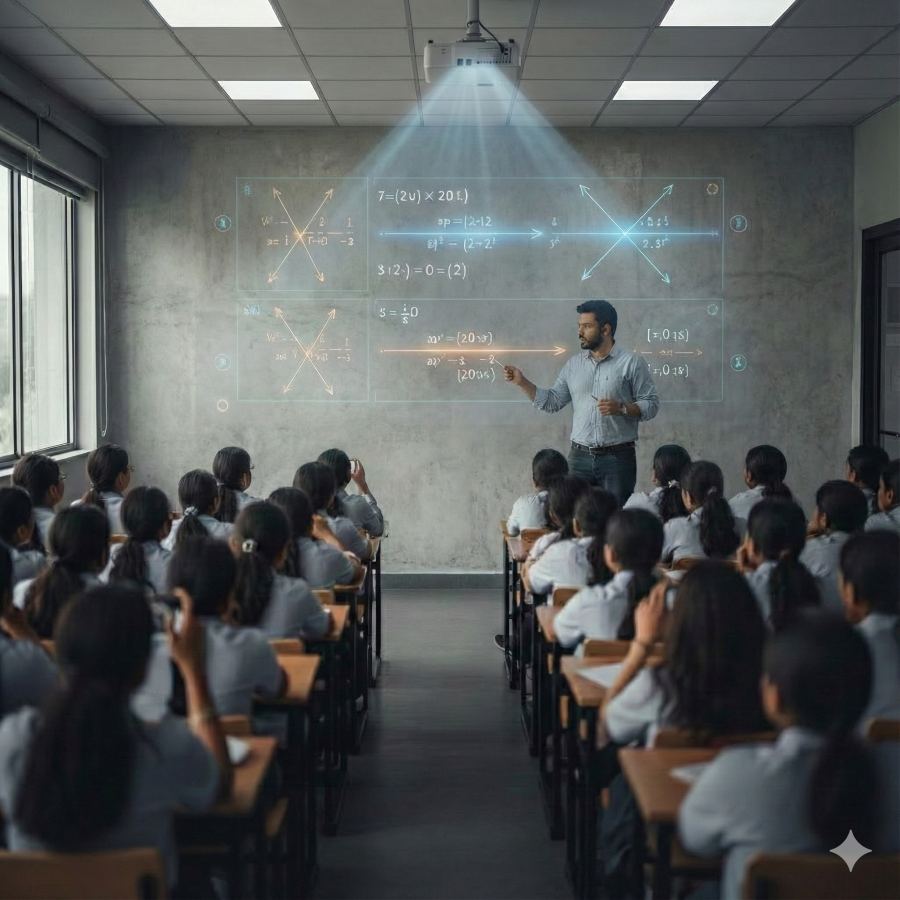What is the Importance of Digital Collaboration in Classroom?

Being a part of the digital education space, we believe digital collaboration in the classroom is a catalyst for meaningful change in how teaching and learning take place. Thus, we’ve created this guide to give you a clear, step-by-step understanding of what digital collaboration is in the classroom, why it matters, how it works, and the real difference it can make in today’s learning environments.
What is Digital Collaboration in the Classroom?
So, let’s start with the basics. Digital collaboration in the classroom is the use of technology to allow students and teachers to work together more effectively, whether they’re physically in the same room or scattered across different locations. It’s not just about having gadgets or smart screens in the classroom; it’s about using tech to boost communication, teamwork, creativity, and problem-solving.
Students work on a project where they can access shared resources, collaborate on documents in real-time, and present their findings using interactive digital tools. It’s a shift from the old chalk-and-talk method to a learning environment where everyone contributes, learns from each other, and stays engaged.
Why is Digital Collaboration in the Classroom Important?
As an educator, you might have this question: Why is digital collaboration in the classroom important? In today’s world, collaboration is at the heart of everything. Students aren’t just competing for grades anymore—they’re preparing for a future where teamwork and digital literacy are essential skills. Here’s why smart collaboration matters:
1. Enhanced Engagement:
Digital tools make learning more interactive and engaging. Instead of listening passively, students become active participants. They work together on projects, respond to quizzes, and share ideas more easily through tech.
2. Inclusivity:
One of the most beautiful things about digital collaboration is that it caters to every type of learner. Whether a student prefers visual, auditory, or kinesthetic learning, technology offers different ways to absorb information. And for students with special needs, digital tools for education can provide accommodations that traditional classrooms simply can't.
3. Real-World Skills:
Collaboration isn’t just important in school. It’s crucial for the workforce too. When students use tech to work together, they’re not just learning the subject matter—they’re also developing digital skills, critical thinking, and teamwork that’ll serve them well later in life.
4. Hybrid Learning:
With the world moving towards more hybrid classrooms, where students learn both online and offline, smart collaboration makes it easier to teach students wherever they are. It’s like making sure no one gets left behind, even if they’re learning from home or any remote location.
How Does Digital Collaboration in the Classroom Work?
Let’s break down how this would work in your classroom. If you think about the traditional classroom setup, teachers stand at the front, write on a blackboard, and students take notes. But in a digital classroom setup, things get a lot more interactive. Here’s what you can expect:
1. Interactive Displays:
Imagine having a smart class setup with large interactive displays where students can come up, drag and drop elements, annotate, and participate in lessons more dynamically. It turns the traditional whiteboard into a powerful learning hub.
2. Shared Digital Platforms:
There are platforms where students can work together on the same document, presentation, or project in real-time. Think of Google Docs, but even more tailored to education. Whether they’re sitting next to each other or working from different homes, they can collaborate seamlessly.
3. Digital Assessments and Polls:
With digital collaboration in the classroom, you can create interactive quizzes or polls that students can respond to immediately. This helps you gauge understanding in real-time and keep students on their toes!
The Benefits of Digital Collaboration for Teachers

Now, we know you're passionate about making learning better for your students, but let’s not forget—digital collaboration is also a huge benefit for teachers. It simplifies a lot of tasks and gives you more time to focus on what matters—teaching! Here’s how:
1. Easier Lesson Planning:
Digital tools let you prepare lessons faster. You can pull resources from the internet, create multimedia presentations, and share them instantly with your class. No more writing the same notes over and over!
2. Enhanced Classroom Management:
With digital platforms, you can track who’s doing what, assign tasks, and monitor student progress in real time. It’s like having a super-organized digital assistant by your side.
3. Continuous Learning:
One of the biggest advantages of digital collaboration in the classroom is that it allows for learning to happen beyond the school day. You can share resources, quizzes, or assignments that students can work on at their own pace. It keeps students engaged even after they leave the classroom.
Steps to Bring Digital Collaboration to Your School
So, how can you make this happen? It doesn’t have to be overwhelming. Here’s a simple roadmap to get started:
Step 1: Evaluate Your Needs
What’s the current state of tech in your school? Do you have Wi-Fi, laptops, or tablets available? What about the teachers—are they comfortable using technology in their lessons?
Step 2: Start Small
You don’t have to overhaul everything overnight. Maybe begin by introducing digital collaboration in a few subjects or with a single project. Test the waters and get feedback from your students and colleagues.
Step 3: Invest in Training
Teachers need to feel confident using these tools. Organize digital training sessions or workshops where they can learn about smart education platforms, tools, and strategies for collaboration.
Step 4: Get the Right Tools
Depending on your school’s budget, you can invest in digital tools for education that make collaboration easier. Choose something user-friendly and effective, whether it’s an interactive whiteboard or a shared digital platform.
How Roombr Digital Classroom Can Help?
So now that we’ve talked about the benefits of digital collaboration in the classroom, let us tell you about something that could be perfect for your school!
Roombr’s interactive wall projector allows students to interact with lessons on a giant 200-inch display, making the learning experience much more immersive. Whether students are in the classroom or joining remotely, they can collaborate in real-time.
The AI-powered technology captures lessons, so every class can be recorded, enriched with extra materials, and made available for students to revisit whenever they want. This means continuous learning and collaboration, even after the school day ends.
The solution also includes tools for teachers to customize lessons, create quizzes, and track student performance. It makes it super easy for teachers to focus more on teaching and less on admin work. And since it’s all powered by Intel i5/i7 processors, it’s got the power to handle all the complexities of hybrid learning.
But the best part? It’s completely Made in India, and Roombr is proud to be supporting Indian schools as they move into the future of education.
Let’s Wrap Up!
Digital collaboration in the classroom is more than just a trend—it's the future of education. By enabling students and teachers to work together seamlessly, regardless of location, technology is fostering an environment where learning is more interactive, inclusive, and engaging. From developing real-world skills to supporting hybrid learning, digital collaboration transforms classrooms into dynamic hubs of creativity and problem-solving. For schools, integrating these tools doesn’t have to be overwhelming. Starting small, investing in training, and choosing the right technology—like Roombr’s digital classroom solution—can set the foundation for a future where students are not just learners, but active collaborators in their education.
FAQs for Educators
1. What are the key benefits of digital collaboration in the classroom?
Digital collaboration in the classroom enhances engagement, inclusivity, and real-world skills. It allows students to work together on projects in real-time, promotes hybrid learning, and prepares them for the future workforce by fostering teamwork and digital literacy.
2. How can teachers manage digital collaboration effectively?
Teachers can use digital platforms to assign tasks, track student progress, and conduct real-time assessments. Tools like interactive displays and shared digital platforms make classroom management more efficient and allow teachers to focus more on teaching.
3. What technology is needed for digital collaboration in schools?
Schools can start with basic digital tools like laptops, tablets, and reliable Wi-Fi. Investing in advanced technology like Roombr’s interactive wall projector can enhance the experience by enabling interactive lessons, real-time collaboration, and hybrid learning. Training for teachers is also essential for seamless integration.
Want to see digital collaboration in the classroom in action? Try the Roombr digital classroom demo.
Parvin Khatun
Share
Step Into the future of
Education with Roombr


















